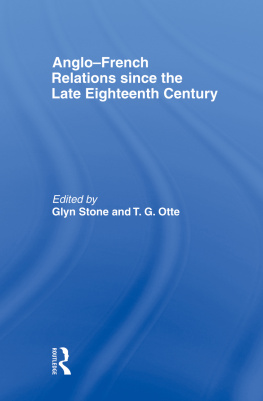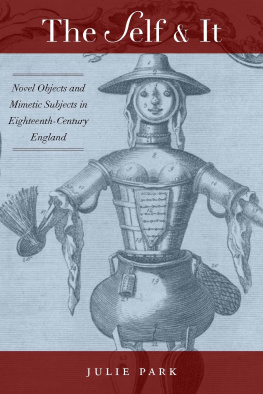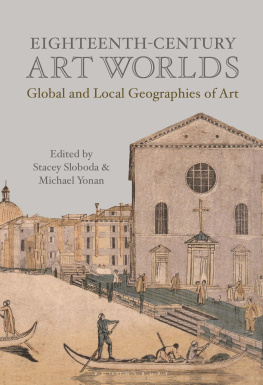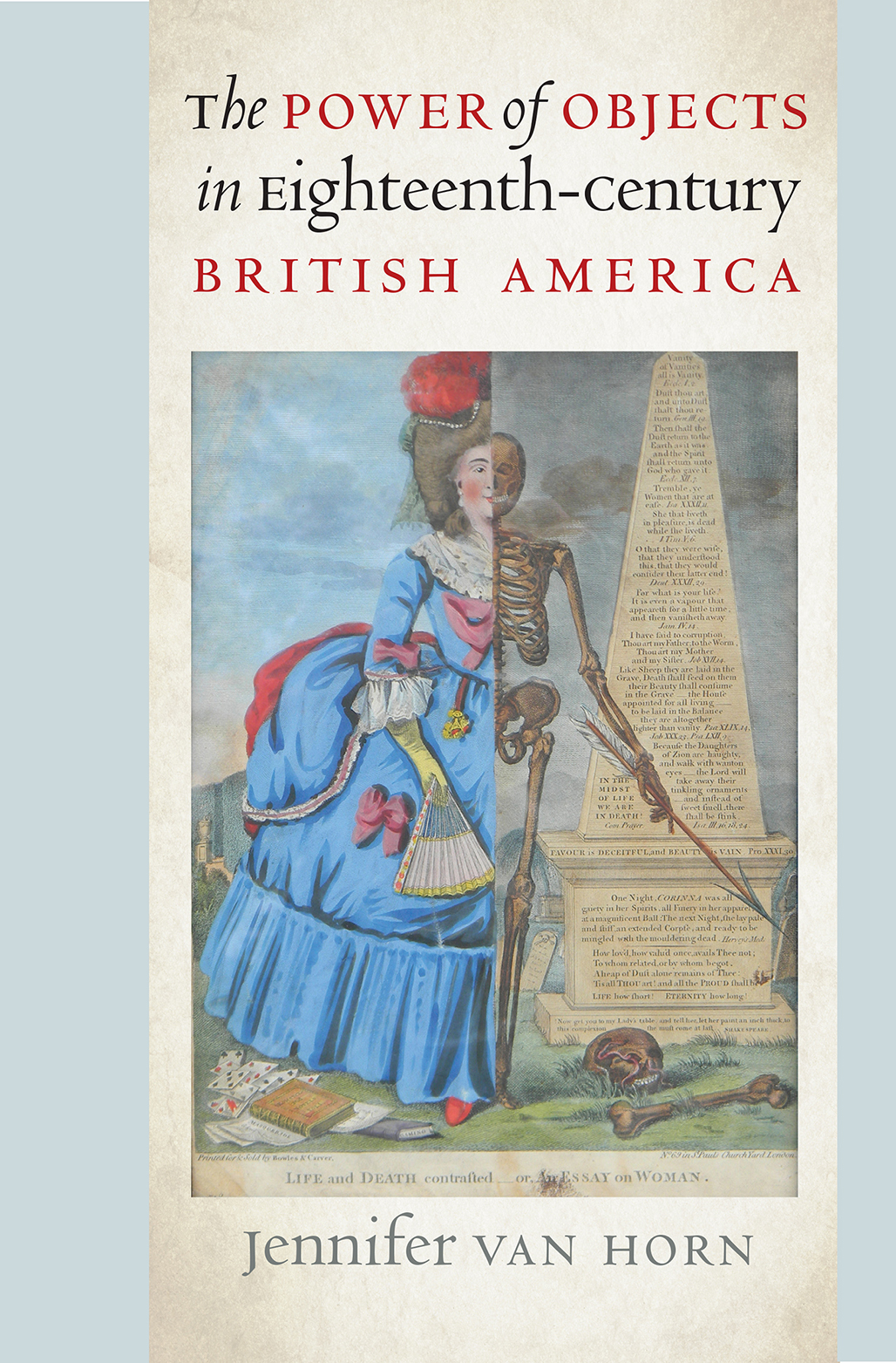Publication of this book has been aided by a grant from the Wyeth Foundation for American Art Publication Fund of the College Art Association.
The University of North Carolina Press has been a member of the Green Press Initiative since 2003.
Portions of Chapter 4 previously appeared in The Mask of Civility: Portraits of Colonial Women and the Transatlantic Masquerade, American Art, XXIII, no. 3 (Fall 2009), 835.
2009 Smithsonian Institution.
Acknowledgments
This project has been a long time in the making. My first debt is to my graduate advisor, Maurie McInnis, who guided this work from its beginnings as a dissertation at the University of Virginia and who has remained a friend, fierce supporter, and asker of astute questions in the busy years since. Louis Nelson, Dell Upton, Peter Onuf, Douglas Fordham, and the late Roger Stein are also due sincere thanks for their significant contributions to the dissertation.
Although this book began at UVA, many of the questions it answers predate my time there. My two years in the Winterthur Program of Early American Material Culture (WPEAC M.A. Program) opened my eyes to the promises of material culture study and remain one of the most intellectually stimulating periods of my life. For that gift, I am eager to thank Gretchen Buggeln, Wendy Cooper, James Curtis, Linda Eaton, Donald Fennimore, G. Ritchie Garrison, Leslie Grigsby, Bernard Herman, Brock Jobe, Anne Verplanck, and my fellow fellows (class of 02). Even before my tenure at Winterthur, I was the beneficiary of wonderful teachers and mentors at the University of Delaware, especially David Brody, Bernard Herman, and the late William Innes Homer.
I have been privileged to have the input of many colleagues, both in the academy and the museum world. These individuals have offered insights at conferences, read portions of my work, answered questions about objects, and suggested sources and approaches. I am indebted to Daniel Ackerman, Robyn Adams, Gary Albert, Georgia Barnhill, Linda Baumgarten, George Boudreau, Steven Bullock, Benjamin Carp, Tara Chicirda, Edward Cooke, Samantha Dorsey, Linda Eaton, Paul Erickson, Brandon Fortune, Sally Gant, G. Ritchie Garrison, Amelia Goerlitz, Bernard Herman, Amanda Isaac, Brock Jobe, Cynthia Kierner, Rosemary Krill, Kate Lemay, Anna Marley, John Ott, Jonathan Prown, Margaret Beck Pritchard, Kerry Roeder, Robert Rook, J. Thomas Savage, Sascha Scott, Ellen Todd, William Truettner, Anne Verplanck, Carolyn Weekley, and Rosemarie Zagarri. Special thanks are due to those who read large portions of my work: Kenneth Cohen, Eleanor Harvey, Ellen Miles, Katherine Rieder, and the late Cynthia Mills. Although I cannot name them all, I am thankful for the many staff members at institutions across the country who have taken the time to show me objects in their collections, allowed me to look through object files, and provided images. Recent years have seen a disheartening shrinking of museum funding, leaving many short-staffed, and thus these individuals deserve special acknowledgment.
I am grateful for the financial and intellectual support that I have received from many institutions. A National Endowment for the Humanities postdoctoral fellowship at Winterthur Museum and Library gave me the time and resources to expand the book manuscript. I received research grants from the American Antiquarian Society, the John D. Rockefeller Jr. Library at Colonial Williamsburg, the Lewis Walpole Library, the Winterthur Museum and Library, the Virginia Historical Society, and the Yale Center for British Art. I was fortunate to be awarded a Terra Foundation for American Art Fellowship at the Smithsonian American Art Museum to sustain my dissertation work as well as a Henry Luce Foundation / ACLS Dissertation Fellowship in American Art. Finally, a generous Shannon Jefferson Scholars Fellowship at UVA provided additional support for dissertation research in addition to funding my Ph.D. For that, I am indebted to Mr. and Mrs. John H. Birdsall as well as the McIntire Department of Art.
At George Mason University and the Smithsonian-Mason Masters Degree Program in the History of Decorative Arts, where I had the honor to teach, a faculty leave enabled me to complete book revisions and a department grant supported this publication. My Mason Art History colleagues (Michele Greet, Rob DeCaroli, Ellen Todd, Angela Ho, and Larry Butler) and my students provided a supportive atmosphere in which to think and write about early American artifacts. I owe a special debt to Cynthia Williams and Angela George for making a place for me in the HDA family and to Brian Platt for welcoming me into the Mason History and Art History Department. I am also indebted to those many HDA graduate students whose observations and queries in class discussions have encouraged me to look again at things I thought I knew. My new colleagues in material culture study at the University of Delaware (Zara Anishanslin, Wendy Bellion, Martin Brckner, and Kasey Grier), contributed their insights to this work before we became coworkers, and I welcome greater opportunities for conversation and collaboration.
I feel truly fortunate to have had the opportunity to publish with the Omohundro Institute of Early American History and Culture. In particular, profound thanks are due to Fredrika Teute for her tireless engagement with the project. Fredrikas thoughtful critiques and her overall vision transformed the final product into a much better book. I am also grateful to Nadine Zimmerli, who gracefully shepherded the book through its final stages, and to Kathy Burdette for her incisive editing and sense of humor. The two external readers of the manuscriptRobert Blair St. George and Jennifer Robertsoffered insightful feedback and new ways of thinking about the book at a crucial time. I could not have asked for better readers and am most appreciative of their intellectual generosity.
Finally, my last debts are my greatest. My interest in early America comes directly from my parents, Paul and Kay Van Horn, who planned summer vacations to historic sites across the country. The sweltering August week that they spent photographing gravestones alongside me in Charleston, South Carolina (capped off by a hurricane), is only one example of their unending support. I am deeply appreciative that they shared their love of the past and the things people used with me, as well as passing on their commitment to learning and education. My cousin P. J. McKown shared her love of colonial gravestones and long ago excited my imagination with tales of the art in Italy. My friend Lee Dunham has participated in far too many conversations about portraits, peg legs, and everything in between. She has always managed to make me laugh and to help me see these artifacts in new ways, as well as offered her support. My in-laws, Gerard and Sheila Koot, have looked at many early American portraits alongside of me with good humor. My husband, Christian Koot, a historian himself, continues to inspire me through his own devotion to the study of colonial America. He has tirelessly read drafts, helped to thresh out ideas, and made time for me to write. This book belongs to him as much as me. And finally, our daughter, Abigail, who arrived toward the end of the process, has been a welcome distraction and an important reminder that the most important things in life are not books after all. This work is dedicated to my family with gratitude and love.








